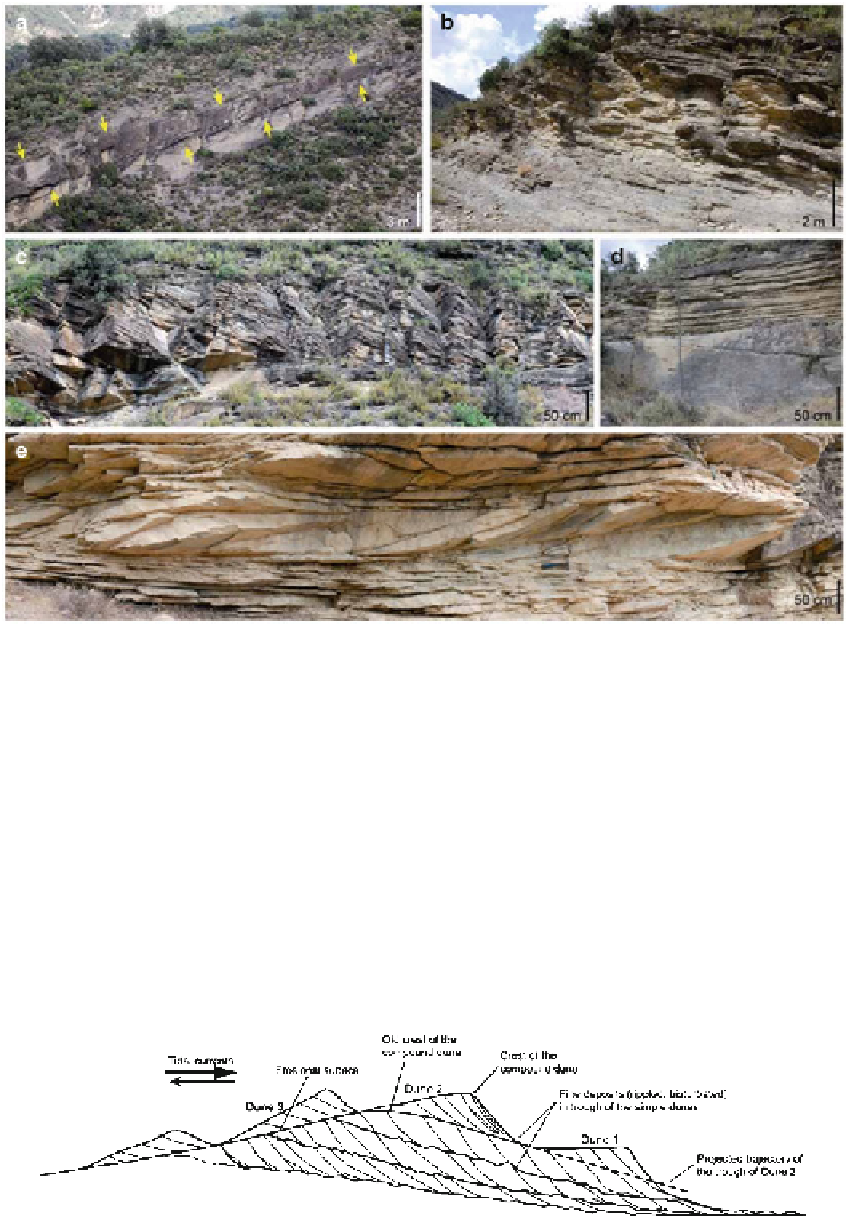Geology Reference
In-Depth Information
Fig. 18.16
(
a
-
c
) Outcrop images of compound tidal dunes of
the lower unit of the Baronia Fm. east of La Baronia (Fig.
18.11b
);
arrows
in (
a
) indicate the base and top. Cross-stratifi ed sets show
unidirectional or bi-directional paleocurrent directions and have
occasional mud drapes on the foresets. The bedforms shingled by
migrating one over the other and offl aping. Single dunes in the
stacked sets (compound dunes) are inclined in the same direction
as the compound-dune master surfaces, that is, the surfaces on
which the larger compound dune migrated by forward accretion
(Olariu et al.
2008a,
b
) . (
d
) Heterolithic fi ne-grained facies inter-
preted to have been formed in the distal part of compound tidal
dunes and areas in between compound tidal dunes. (
e
) Tidal
bundle succession of approximately 10 m long forming part of a
compound dune in an erosional depression on the seafl oor either
associated with an estuarine channel (cf. Mutti et al.
1985b
) or a
large tidal scour (cf. Olariu et al.
2008a,
b
) in the upper unit of the
Baronia Fm at the village of La Règula (see Fig.
18.8
); the latter
interpretation is considered more likely. Dune foresets and
master bedding surfaces dip towards the WNW and are draped
with mud (Olariu et al.
2008a,
b
) . Successively increasing and
decreasing bundle thicknesses are interpreted to represent
successive neap and spring periods (cf. Mutti et al.
1985b
)
Fig. 18.17
Compound tidal dune model for the Baronia Fm
showing the formation of a compound dune. Note that the
inferred trajectory of successive dune troughs (
dashed line
)
caused truncation of the previous cross-strata (modifi ed with
permission after unpublished data of Cornel Olariu, University
of Texas at Austin)


